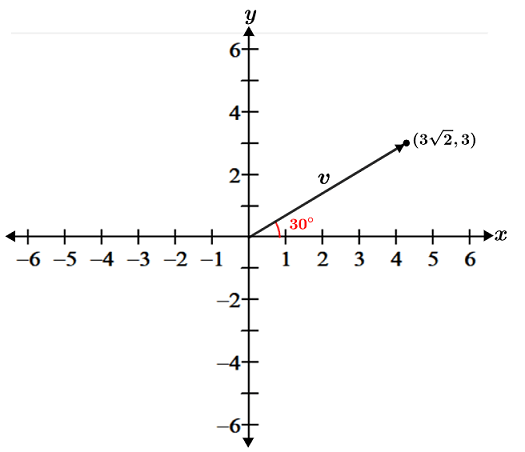Unit vector
A unit vector is a vector that has a magnitude of 1 unit. Unit vectors are typically denoted using a lower case letter with a circumflex ("hat") symbol above, for example: .
A unit vector can be scaled such that it forms a vector whose magnitude is some scalar multiple of the unit vector. When multiplied by a scalar, the magnitude of the unit vector changes, but its direction is preserved unless the scalar is negative; if the scalar is negative, the direction of the new vector points in the opposite direction of the unit vector, as shown in the figure below.
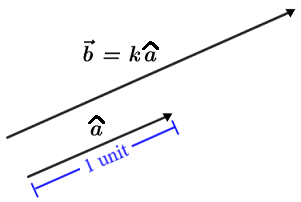
|
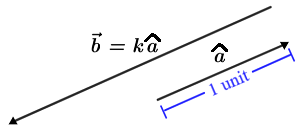
|
| Positive k | Negative k |
The magnitude of the vector formed by multiplying a unit vector
by a scalar k, is denoted as follows:
How to find the unit vector of a given vector
To find the unit vector of a given vector, divide by the magnitude (or norm) of the vector. The unit vector, , for
, is
,
where the magnitude . The process of finding a unit vector is sometimes referred to as normalizing the vector.
Example
Find the unit vector for .
First find the magnitude of v:
Then the unit vector is:
To confirm that this is the unit vector, compute the magnitude:
Standard unit vectors
The standard unit vectors are the unit vectors parallel to the axes of the coordinate system. In the 2D coordinate system, the standard unit vectors can be written as . Any vector in the 2D coordinate plane can be written as a linear combination of i and j. For example, we can write
as:
In general form, given , then:
,
where v1 and v2 are scalars.
Example
Let vector v have its tail at (3, 5) and head at (-2, 1). Write v as a linear combination of i and j.
The components of v are
or in column form
which can be written as a linear combination of i and j as follows:
The vector is shown in the figure below:
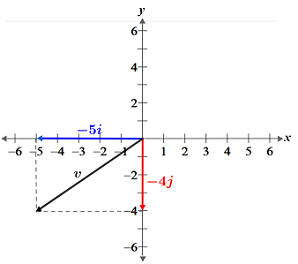
It is worth noting that the standard unit vectors in 2D or any other dimension are independent of each other, meaning that they cannot be written as a linear combination of any other vectors in that particular dimension.
In the 3D coordinate plane, the standard unit vectors are:
The figure below shows vectors i, j, and k graphed on the 3D coordinate plane along with w, a vector that is a linear combination of i, j, and k.
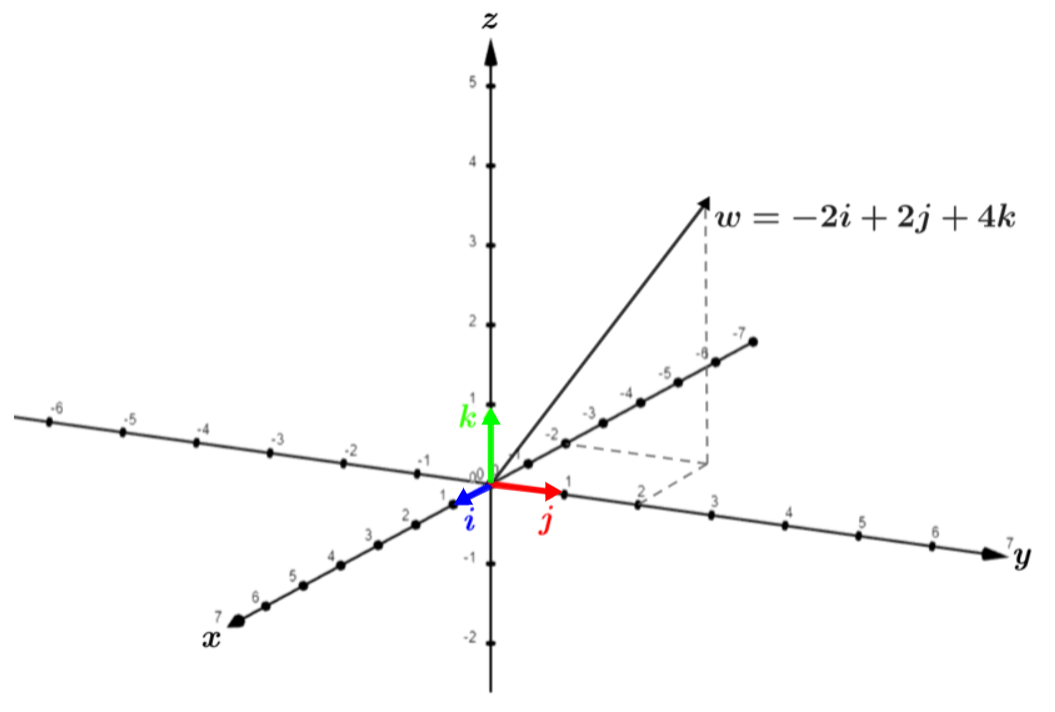
Writing parallel vectors with unit vectors
Unit vectors can be used to write parallel vectors. Two vectors are parallel if one can be written as a scalar multiple of the other. As such, unit vectors can be used to write any number of parallel vectors.
Example
Write vector w in component form given that it has a magnitude of 5 units and is parallel to
First, find the unit vector for v:
Since has unit length and is pointed in the same direction as v, it is parallel to v, so we can write w as a scalar multiple of
such that
. Thus:
Using unit vectors and direction angles to write vectors
If is a column vector,
is its unit vector, and θ is the angle between the x-axis and
, then the components of
lie on the unit circle, and we can use the cosine and sine functions to determine its components such that
since . Refer to the figure below.
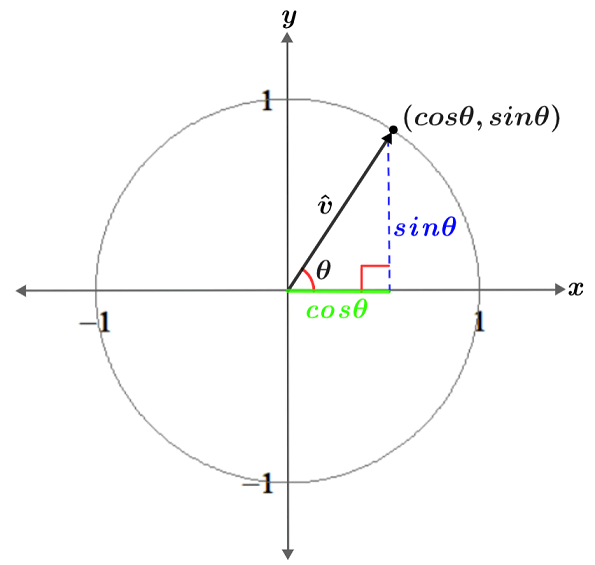
Since θ determines the direction of , it is often referred to as the direction angle for
. Vector v has the same direction angle as
, so we can write v as
,
or as a linear combination:
The direction angle can then be determined using the components of v and the tangent function:
Thus, , where an adjustment for θ may need to be made depending on what quadrant the head of v is in.
Example
Write vector v as a linear combination of vectors i and j given that it has a magnitude of 6 units and a direction angle of 30°.
Using ,
Vector v is graphed in the figure below:
